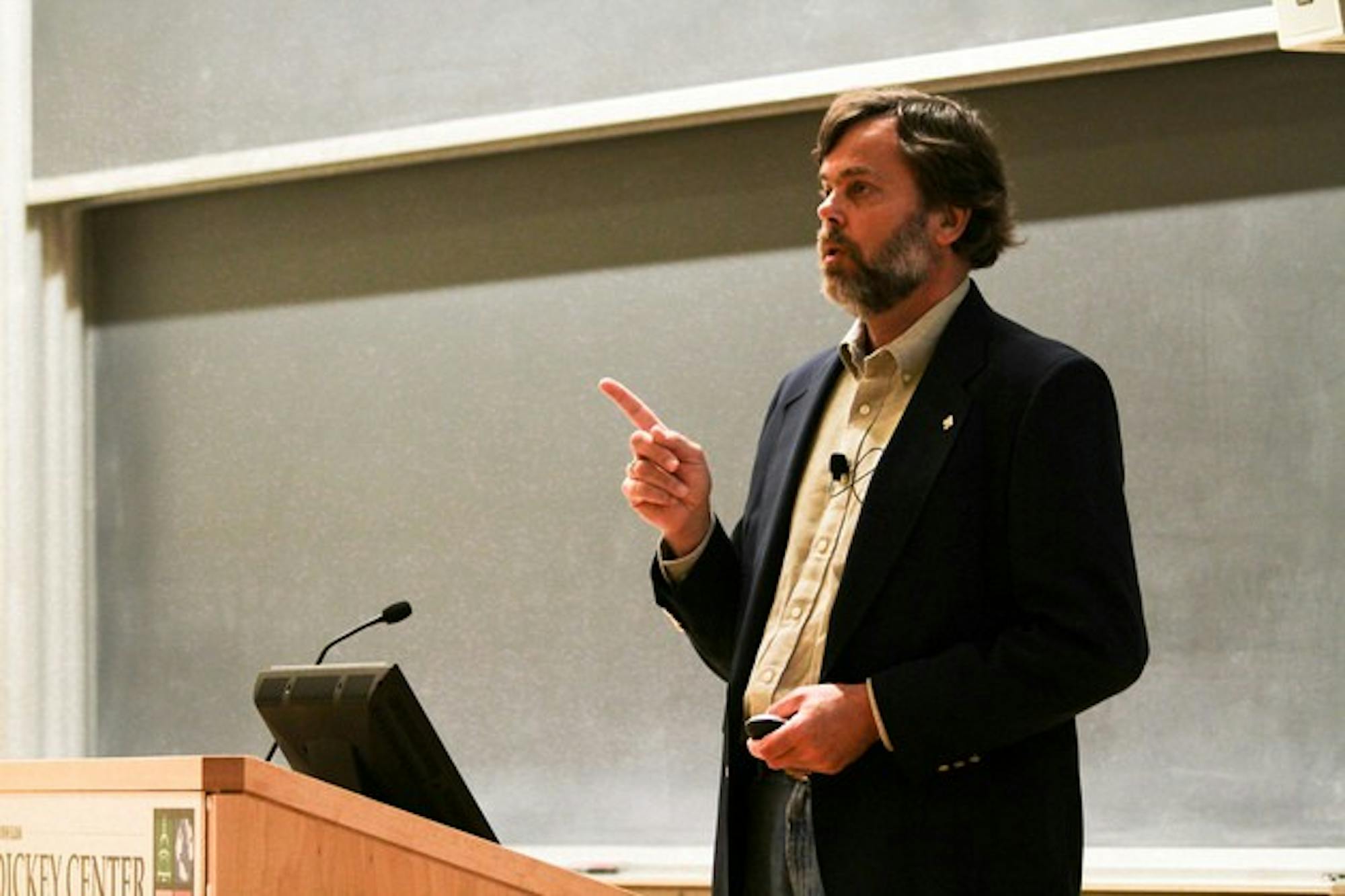"Maybe for you, this is an academic interest; but for us in the West, glaciers are where we get our water from," Fountain told the audience.
Fountain addressed rapidly shrinking glaciers and their effect on the rest of the world's ecosystems in a lecture Monday afternoon at the Haldeman Center, "The History of Glacier Discovery in the U.S., and their Role in Global Sea Level Change."
Contrary to conventional wisdom, glacial recession is not caused by warmer air temperatures, Fountain said. Instead, their disappearance has accelerated primarily because of both warmer sea temperatures and pooling of water on the glacier surfaces.
Warmer sea water circulates beneath the surfaces of glaciers, causing them to retreat. In Greenland, slight shifts in ocean currents have sent an influx of warmer waters underneath the glacial surfaces, according to Fountain.
Pooling water on the surface of a glacier is even more erosive than warm ocean currents, Fountain said. While surface water does not actually melt the glacier, it accelerates its retreat by infiltrating crevasses and splitting ice shelves open. This process, which softens the entire glacial mass and hastens the glacier's slide into the sea, led to the 2002 collapse of a Connecticut-sized piece of Antarctica's Larsen Ice shelf, which garnered international attention.
As glaciers begin to slide toward the ocean at increasing speeds, they lose ice because of reduced friction, Fountain noted. As ice disappears, less light is reflected from the Earth's surface. This warms ocean temperatures even further, forming more lakes on the surfaces of glaciers and hastening their disappearance.
This process is most visible in Greenland, where an increasing portion of the ice cap has melted each year, Fountain said.
Despite the media's focus on the disappearance of the Greenland and Antarctica ice caps, Fountain said the melting of small glaciers poses an equally serious threat to sea levels. Combined with other effects of global warming such as thermal expansion Fountain said current melt rates would raise sea levels roughly one meter by 2100.
Fountain praised changing environmental attitudes, comparing them to a 1962 ad in Life Magazine for Humble energy, now ExxonMobil, which boasted that the company "supplies enough energy each day to melt seven million tons of glacial ice."
Despite the somewhat pessimistic tone of the talk, Fountain said he was optimistic about the future, citing previous environmental successes.
"Good science and good policy on the international level have resulted in the closing of the ozone hole," he said. "We can't reverse this, but we can stop it from getting worse."
During his talk, Fountain also summarized the history of glacier discovery in the United States and the resulting growth of environmental consciousness.
Clarence King, who led a United States Geological Survey expedition to survey the 40th parallel, identified the first glacier in the western United States in 1870. During the expedition, King found the west's first known glacier on Mt. Shasta on Sept. 11 of that year, Fountain said. After these initial discoveries, many more explorers set out to find others, notably John Muir in the Sierra Nevada ranges.
By the late 1800s, geologists such as Israel Russell had noticed that the West's glaciers were receding. A 1930s Sierra Club essay by Oliver Kehrlein described the "alarming extent to which the glaciers had receded." By 1940, geologists were predicting that "many of these ancient ice masses would disappear within 50 years," Fountain said.
Although those predictions have not yet come to pass, Fountain said accelerating glacier melting across the globe threatens both water supplies and current sea levels.
The lecture was the first of several "Dialogues in Polar Science and Society," a series of talks sponsored by the environmental science department.




